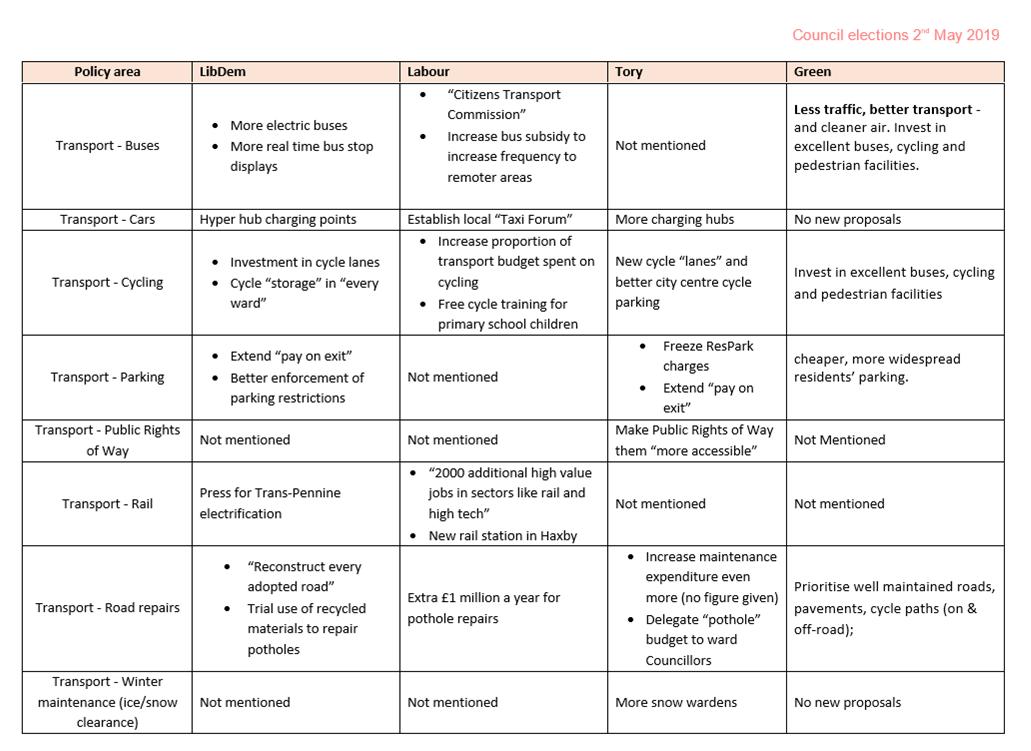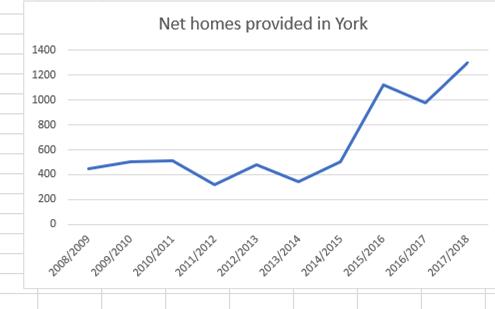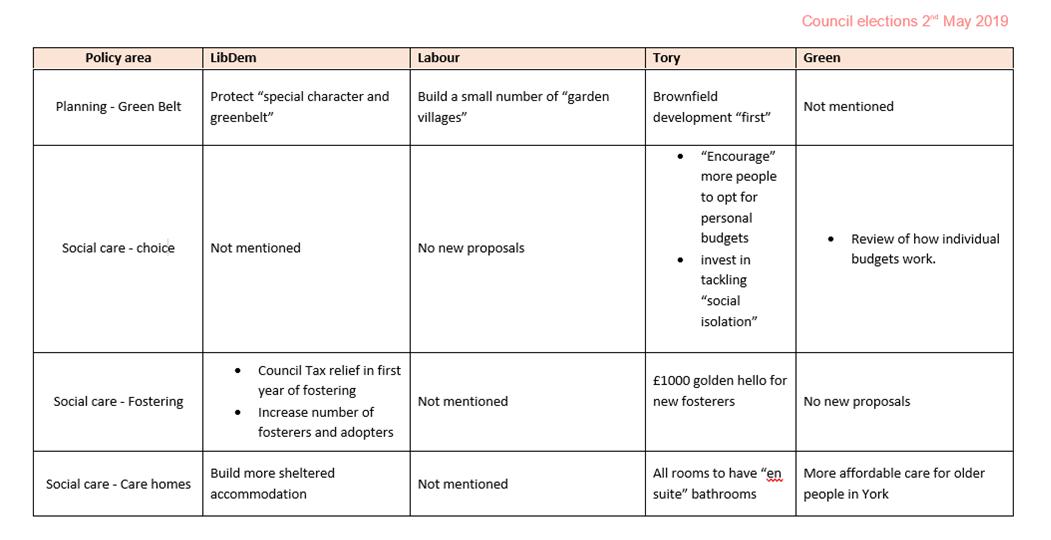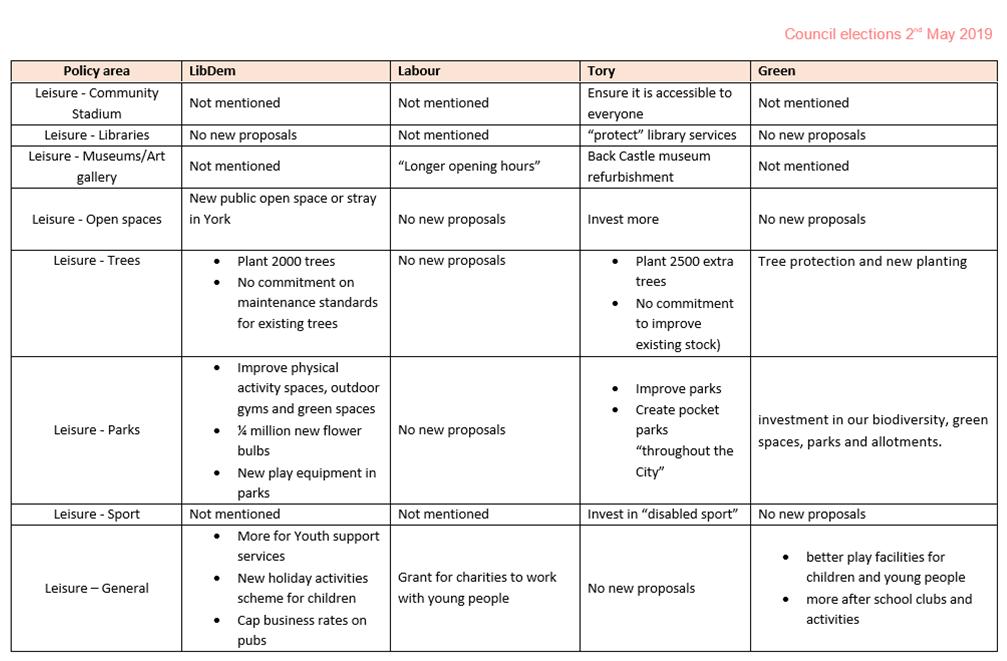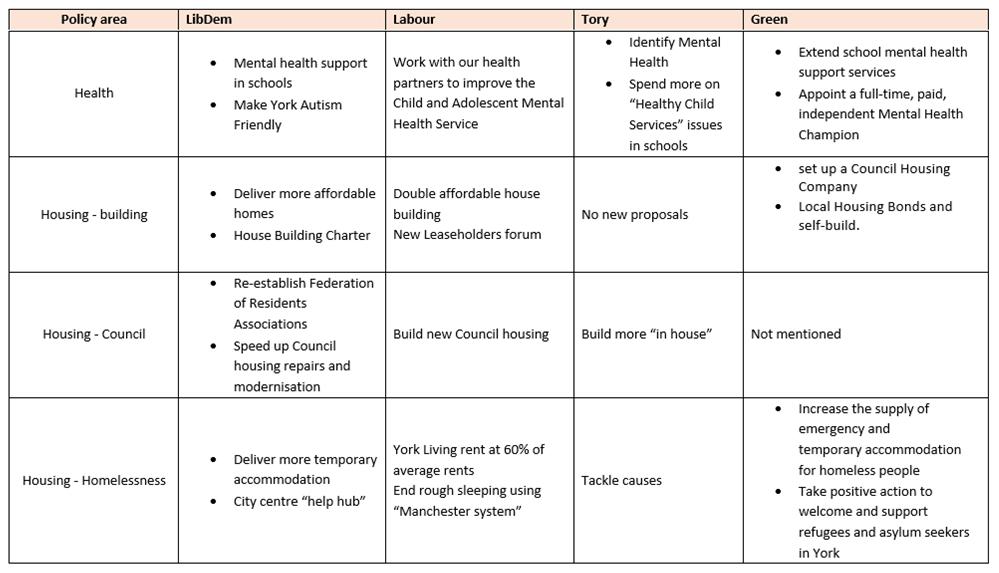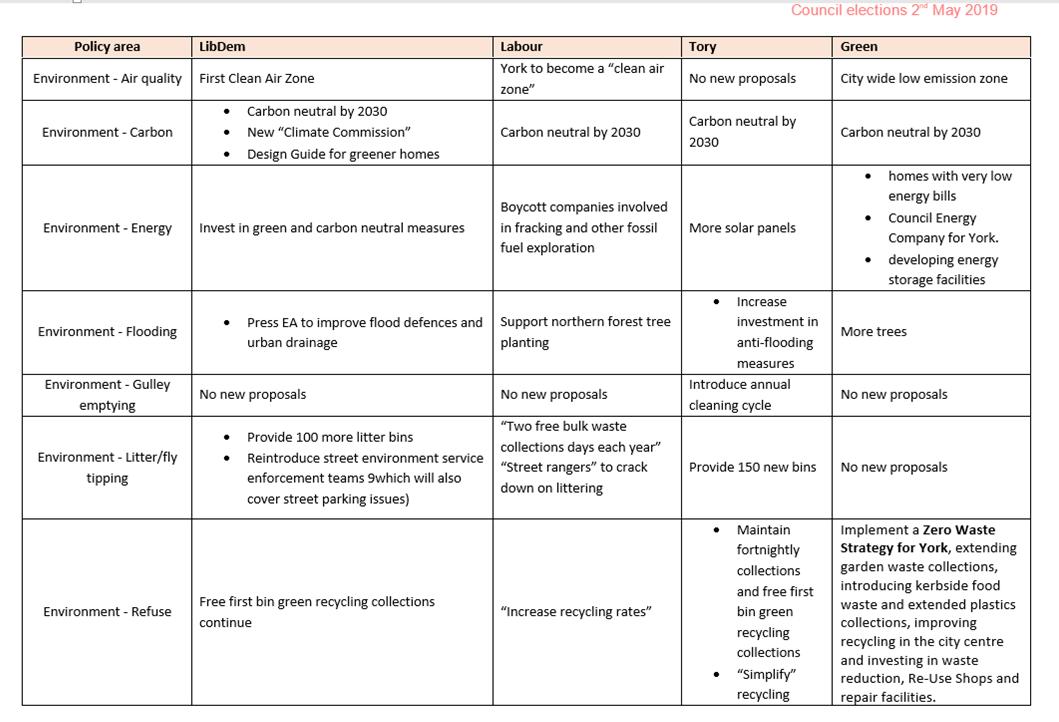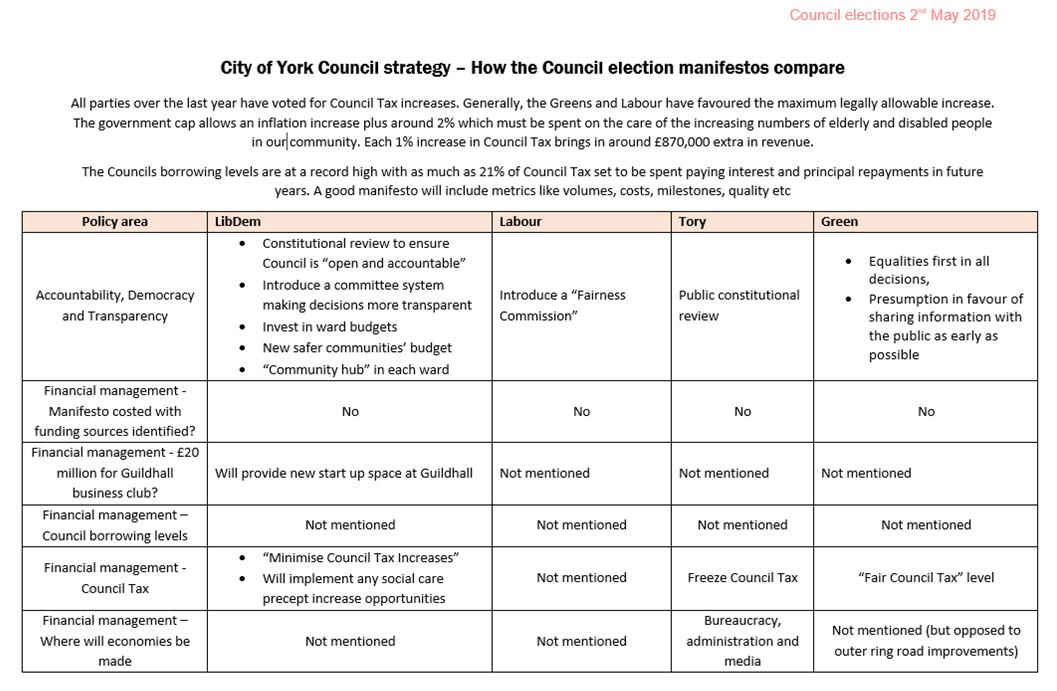7. Transport

It is said that there are 200,000 transport experts in York. Unfortunately none of them seem to have got near the party policy manifestos this year
Transport is always a controversial area. It is important that parties put forward clear policies. This didn’t happen in 2011 when Labour omitted to mention that they intended to sell off City centre car parks (they tried to sell off Union Terrace car park within weeks of taking office), introduce a universal 20 mph speed limit at a cost of £600,000 (which actually saw both vehicle speeds and accident levels on some roads increase) or draconian access restrictions on Lendal bridge. They also halved the amount spent on road resurfacing.
The Coalition has fared a little better with road repair expenditure increasing (albeit, so far, with little obvious effect). Passenger approval ratings on most bus services have improved. The number of bus passenger trips has increased from 16.2 million to 16.8 million.
There have been mistakes. The decision to scrap the ResPark discount for low emission vehicles, and make it available only to drivers of electric models, was ill-judged. There are no electric vehicles charging points on York streets ( those in car parks are unreliable). “On street” and “on line” systems also fail to display the number of free car park spaces (a facility which was available 10 years ago). The Council resolutely refuses to publish bus service reliability stats (despite the facility being available since “next bus” technology was rolled out a few years ago).
None of the parties say what their policy is on the number of, and charges for, central area parking spaces. They also fail to offer any policies on taxis in general and whether UBER should operate in the City.
All parties offer more investment in resurfacing footpaths and roads. Labour quote £1 million pa. Given that the resurfacing of Stonegate this year will cost £1/2 million, the scale of the problem will be apparent. The LibDems promise to “reconstruct” all adopted highways. Reconstruction involves providing a new base as well as a wearing layer. It is much more expensive then either surface dressing or providing a bitmac overlay. The promise looks optimistic to say the least.
Similarly the Greens hopes for a discrete “off road” cycle network “as exists in some places on the continent” seems to ignore the constraints of an historic city layout… ..and the relative lack of success of the Baedeker raids!)
Although the manifestos avoid the usual mistakes (promising a central bus station, river buses, linear cable cars etc), there will be a feeling that none of the parties is yet ready to embrace the rapidly changing transport technologies which are becoming available.
